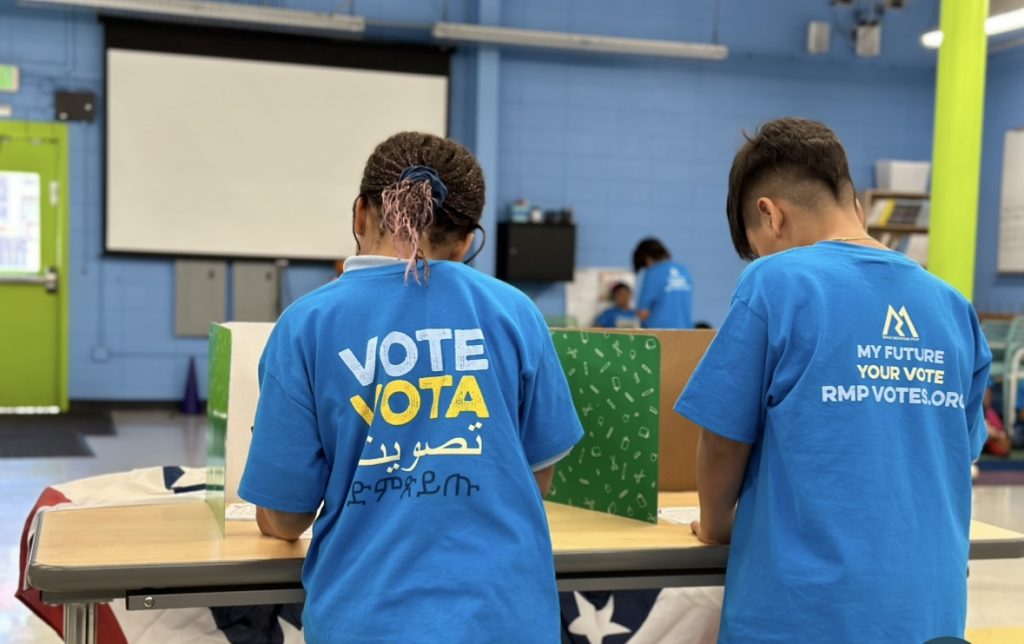The fallout from Denver Public Schools firing McAuliffe International School Principal Kurt Dennis continues to ripple across the district, raising important questions over what student discipline is appropriate versus what is excessive.
While Superintendent Alex Marrero cited a violation of student privacy in his decision, several board members criticized Dennis for overly harsh discipline in putting a student in a locked deescalation room. Dennis has argued he was following district protocol and that the student was under observation until he could safely return to the classroom. Dennis has since sued the district and board in federal court over his firing.
Deborah Staten, deputy chief of staff under the superintendent, spoke to Boardhawk to discuss the district’s discipline policies. She declined to comment on the McAuliffe situation. Generally, however, she said school seclusion settings can be acceptable discipline if used as a safe space to help a student calm down, but locking a student in a room is prohibited.
The controversy in part underscores how many students and parents are confused about discipline practices.
Like other districts, DPS allows teachers, principals and staff flexibility to handle classroom issues such as disruptive students or minor misconduct. But response to bigger school safety problems such as assaults, sexual and racial harassment, and weapons follow strict discipline protocols that include suspensions and expulsions in extreme cases.
“To achieve a proper balance that ensures school safety and the need to educate every student requires applying discipline that is consistent, equitable, and fair across schools,” Staten said.
The district’s policy statement reflects that balance: “Students have a right to attend schools that are safe and free from unnecessary disruption. The Board believes that proper student conduct, reinforced by an effective discipline program, is essential to create and maintain a positive school climate.”
Added Staten: “That is the goal. I don’t think we achieve that 100% of the time every day at every school, and that’s why we have continuous training for teachers and staff, that’s why we look at school data in multiple ways (because) data can tell a story that helps us better understand student behaviors.”
According to the Colorado Department of Education, DPS had 5,704 disciplinary actions against students in the 2021-22 school year. That included 3,571 suspensions, 23 expulsions and 125 law enforcement referrals. Expulsions declined from previous years while suspensions remained roughly the same. DPS had fewer expulsions compared to other large districts such as Colorado Springs, Jefferson County and Cherry Creek.
Data also shows that Latino and Black students in DPS were disciplined at a higher rate than white students. The district student population is 52% Latino, 26% white and 13% Black compared to a discipline breakdown of 61% Latino, 25% Black and 14% white.
The disparity has been a stubborn trend in DPS – and many districts – for years. Staten described equity efforts as “a marathon” that involves culturally responsive training, equity modules, professional development, and other support. The district’s Black Excellence Resolution, for example, requires each school to develop plans to address disproportionalities not only in discipline but in overall achievement, special education and Gifted and Talented programs.
“Equity is a core shared value in DPS that goes beyond discipline,” she said. “The more people look at their school data and act on it, the more progress we will see with all our students.”
Progress is achieved when educators help students understand what issues caused their misconduct and how they can change their behavior in a positive direction, she said. For instance, a student who is acting out or has chronic attendance issues likely would benefit more from meeting with a social worker, school psychologist or counselor than being punished.
“We are trying to teach students how to approach problems and resolve conflicts … And it is always important to communicate with their parents so they know what is going on with their children. They need to be part of the discussion too,” Staten said.
The district’s discipline policies are generally limited to offenses committed at school, school activities or directly related to school. Offenses committed outside of school are not part of the protocols unless there is a school connection.
For instance, a student can be punished if their actions outside school create a “hostile environment by substantially interfering with or impairing (another) student’s educational performance, opportunities, or benefits,” such as a threat to harm.
The issue recently came before the U.S. Supreme Court, which ruled 8-1 in 2021 that a Pennsylvania school district violated the free speech rights of a student who was punished when she posted outside of school a profanity-laced social media tirade against the school after getting kicked off the cheerleading squad.
In DPS, after the shooting at East High School last spring during a pat down, then-McAuliffe Principal Dennis told 9News that his staff also was at risk having to do pat-downs of a student who had been previously charged with attempted murder in an incident outside of school. An attempt to expel the student was denied by the district, saying in an email to Dennis that “there is no evidence (name redacted) was in possession of a firearm on his school grounds or at any other DPS school.”
DPS “discipline matrix” and responses
Thus, student offenses listed below under the district’s discipline policies are school related. There are six levels of offenses that range from disruption to weapons
Type One
- Classroom disruption, excessive tardiness, bothering students, profanity, dress code violation, disrupting school activity, disobedience, insults, using cell phone/electronics in class, minor damage to school property, tobacco offenses, gambling, pushing/shoving, scholastic deficiency, minor misconduct.
Response: Managed by teacher in consultation with student and parent; may include staff support from school psychologist, social worker nurse or counselor. Intervention or restorative practice may be involved depending on extent of the problem, student grade level and other factors.
Type Two
- False fire alarm, fireworks, bullying, harassment based on race, religion, disability; sexual or gender harassment; consensual but inappropriate physical contact, graffiti/destruction of school property; severe defiance of authority; trespassing; theft under $500.
Response: Teacher or support staff provides documentation of incident to principal or school administrator; interventions vary and can include parent conference, restorative practice, implementation of a behavior plan and a one to three day in-school suspension depending on grade level and safety concerns.
Type Three
- Bullying that causes physical, mental or emotional harm; severe harassment beyond Type Two levels; fighting, under the influence of alcohol or drugs; possession of alcohol or drugs; theft (of $500 to $5,000); escalating disruptive behavior.
Response: Same at Type Two with mandatory behavior plan and more documentation; students in grades 4 to 12 can receive up to three days in-school suspension or 1 day out-of-school suspension; younger students can be suspended for one day for the purpose of safety planning.
Type Four
- Arson, third-degree assault (knowingly causing injury to another person), theft or property damage over $5,000; possessing explosive fireworks; assaulting school employee; hazing; child abuse; unlawful sexual behavior; intimidating or retaliating against a witness; ongoing behavior that threatens school safety.
- Response: Same as Type Three with up to potentially more days of suspension for students in grades 4 to 12 if safety concerns and planning time are necessary to reintegrate student back to school; Expulsion hearing may be requested for older students depending on offense; Students in preschool to grade 3 may face one day of out-of-school suspension but expulsion is not an option.
Type Five
- Robbery (taking item of value by force or threat of force); first-degree assault (using a weapon to injure a person); second-degree assault (causing serious bodily injury); sexual assault by force without consent.
Response: Mandatory review and referral to DPS Department of Safety and law enforcement.
Type Six
- Possession of a firearm (does not include toy guns/cap guns/pellet guns).
Response: Expulsion recommended (mandatory expulsion hearing); referral to DPS Department of Safety and law enforcement.
Note: For more details and examples, go to pdf of Student Conduct and Discipline Procedures.




